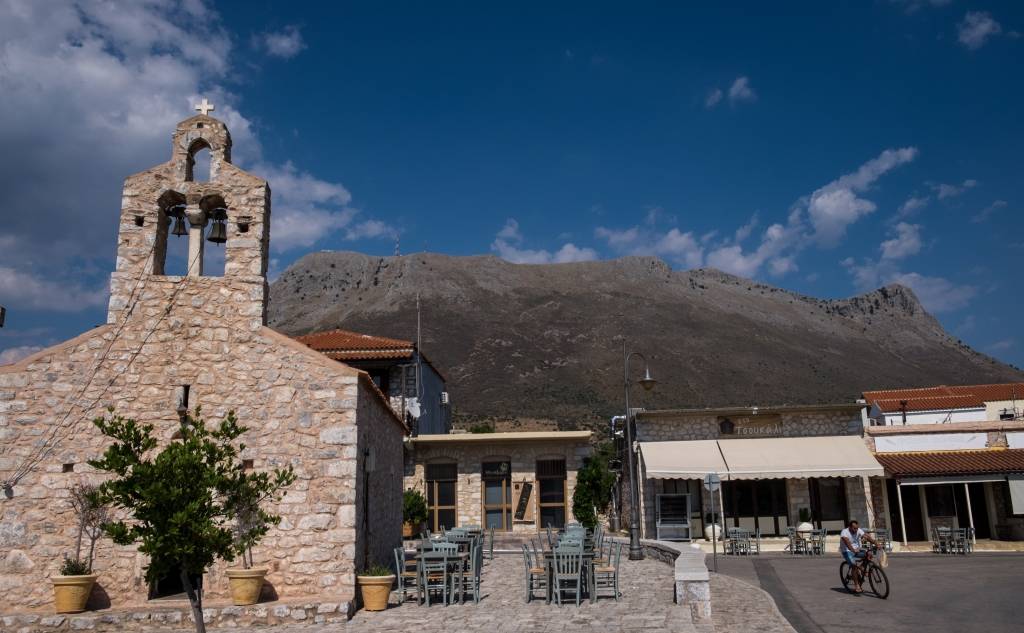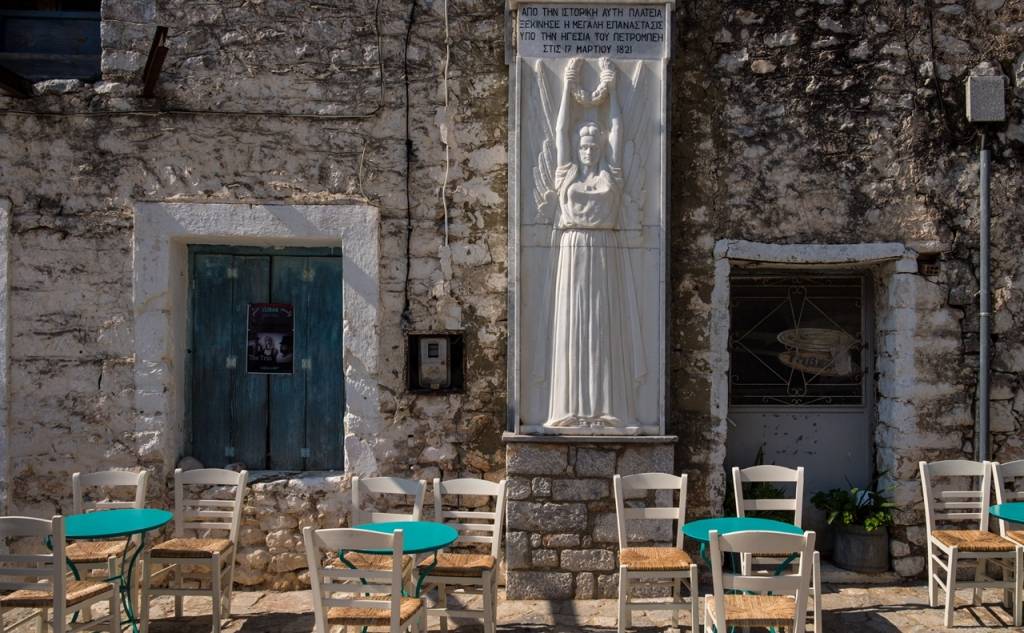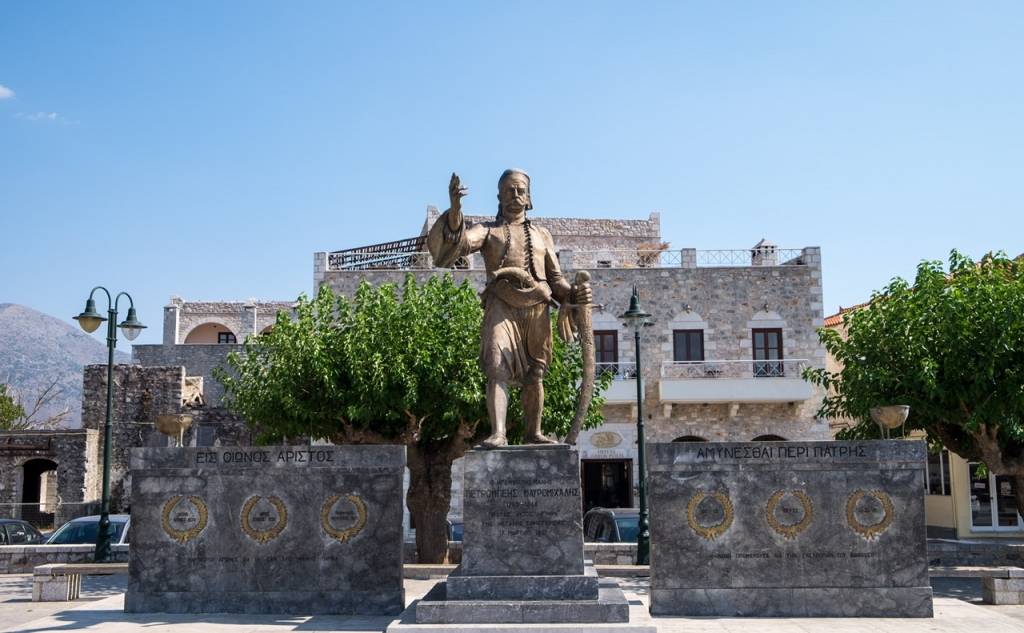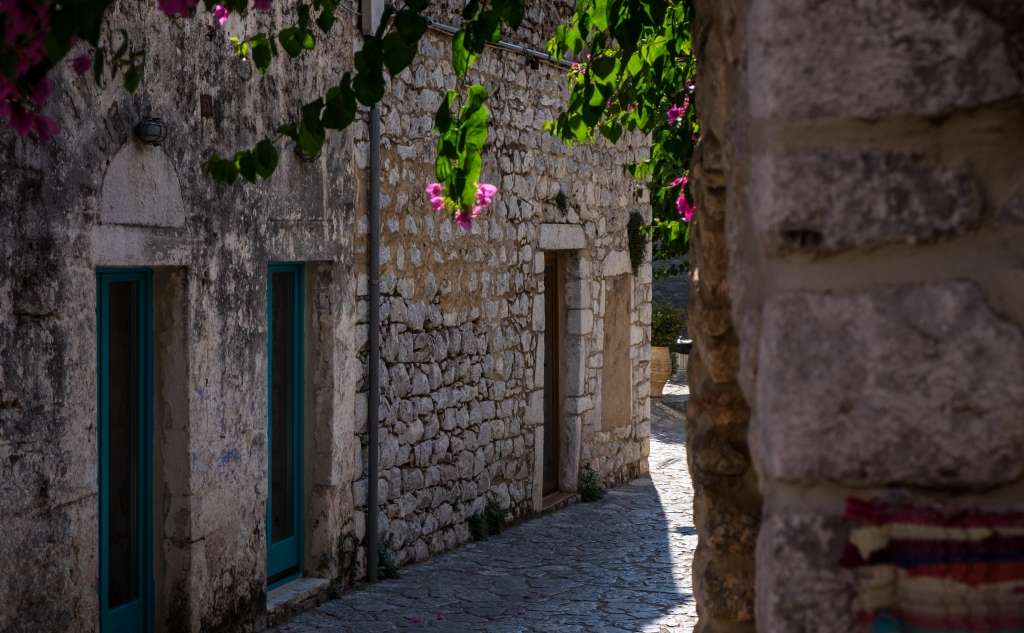









Areopolis is built at the foot of Prophet Elias Mountain, with the homonymous chapel, at an altitude of 250 metres and is located 72 kilometres from Sparta. The capital city of Mesa Mani has been considered a preserved settlement, keeping the traditional colour of the area alive. Dominating over its natural port, the famous Limeni generously offers its beauties to every visitor. Aeropoli is also a historic settlement that retained its independence during the Turkish occupation, home of the Mavromichalis family.
During the Turkish occupation, it was called Tsimova or Tzimova. There are two versions of the origin of the name. According to the first, the name was due to refugees from Tsimovasi in Smyrna, but the most prevalent version is that Tsimova is a Slavic word meaning "devil's city" or "small plain". The earliest reference to Tsimova was in a manuscript of the Decoulos Monastery, which, unfortunately, has now been lost. This manuscript lists 1200 residents of Tsimova, including the Aleppis, Fournarakos, Chrysakakis family and others.
We do not exactly know when the city was built. In one version, it was built by the descendants of Michael Kardianos. In contrast, in another, it was built by the descendants of two brothers who, being persecuted by the Turks, left the Kallipoli of Thrace and settled at Itilo. It is noteworthy that the first armed groups were formed at Areopolis, where the flag of the Revolution was first raised on March 17th, 1821. The flag of Areopolis was white with various national symbols. It has been saved and is now on display at the National History Museum of Athens. Indeed, on the Athanatos square at Areopoli, you can see the stone which the Maniates used to support the Greek flag, while next to it stands the statue of Petrobeys Mavromichalis.
In 1836, Tsimova was renamed Areopolis by a decree written by Otto to honour the martial virtue of the Mani people. A possible version of the name is that the people of Mani of that time gave it the name of the god of war, Mars (Aris), or that it was so named by the strong winds that hit the area.
In Areopolis, many sights will entice visitors to journey through time as they wander through stone houses, churches, imposing stone towers and cobblestone streets. At Athanaton Square, a small celebration occurs every Saturday as local producers set up their benches and sell local produce. The visitor has many accommodation choices between hotels and traditional hostels, as well as cafes, taverns and bars for fun.